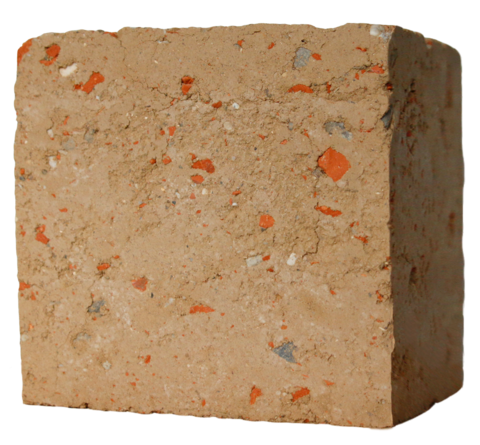Rammed clay with a recycled aggregate of brick
Life Cycle Transition
About the Product

Loam is a type of soil composed of sand, clay and silt. It is formed by the weathering of rock layers and is regionally available almost everywhere. For the production of rammed earth walls, aggregates such as gravel and chippings are added to the clay to increase its strength. The addition of recycled brick chippings can also improve the moisture balance of the clay wall, as the brick chippings can absorb excess water through their porous structure. The rammed earth mixture is poured in layers into a formwork and compacted to approx. 2/3 of its volume. If produced on site, local material can be used, ideally excavated material from the building site. However, prefabrication of individual rammed earth wall elements in the factory is also possible.
Rammed earth is suitable for use both in the interior and as a load-bearing exterior wall. Solid rammed earth walls have a positive effect on the indoor climate, as they regulate humidity and serve as heat accumulators. In addition, they can be thermally activated by integrated heating pipes. Rammed earth walls in outdoor areas that have not been additionally chemically stabilised must be installed in such a way that they are weather protected.
In the case of sorted deconstruction, rammed earth can be recycled indefinitely or returned to the biological cycle. However, the prerequisite is that the rammed earth walls have not been chemically stabilised by the addition of cement or lime. Under these circumstances, the material can only be recycled, for example as a filler.
Manufacturer: Lehr- und Forschungsgebiet Architekturtheorie